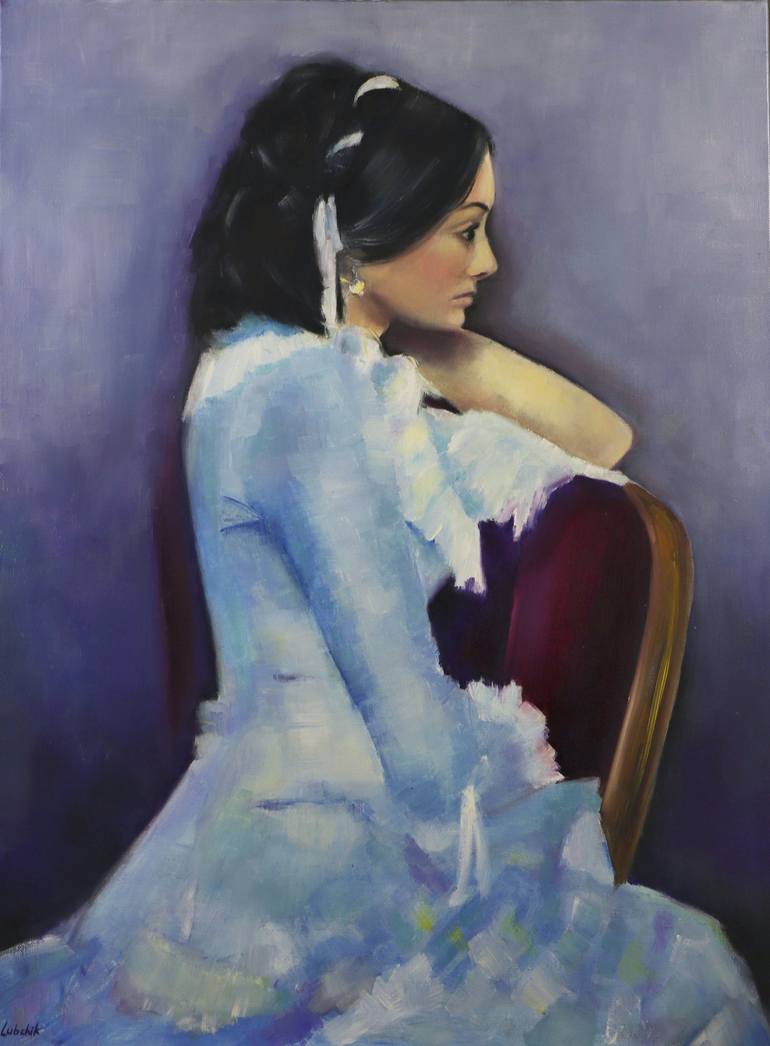The Effect of Figurative Oil Painting on Modern Art and Society
The Duty of Feeling and Expression in Figurative Oil Painting: An Extensive Evaluation of Topic Issue and Make-up
The interplay of emotion and expression in figurative oil paint serves as an essential lens through which one can take a look at the intricate connection between subject and structure. Artists harness various methods, from color choice to brushstroke characteristics, to cultivate psychological resonance within their jobs. This nuanced orchestration not just forms audience perception but additionally welcomes a deeper questions into exactly how these components integrate to reflect the intricacies of human experience. As we discover this rich terrain, one have to take into consideration just how particular study illuminate the more comprehensive implications of these artistic selections.
Recognizing Emotion in Art
Feeling in art works as a powerful channel for expression, permitting artists to communicate complex sensations through their job. In figurative oil painting, this emotional deepness is typically depicted through the representation of the human figure, recording the subtleties of human experience. The selection of subject issue, shade combination, and brushwork all contribute to the emotional vibration of an item.
Artists regularly bring into play personal experiences, social problems, or global themes to evoke feelings in the customer. For circumstances, a portrait may mirror vulnerability, while a vibrant number in activity can symbolize freedom or chaos. These psychological strings link the audience to the artwork, cultivating a dialogue that transcends the aesthetic tool.
Moreover, the interplay between light and darkness can enhance emotional strength, directing the customer's look and accentuating specific elements within the make-up. Making use of texture in oil painting better includes layers of complexity, inviting a tactile action that improves the psychological experience. Generally, understanding emotion in art is important for valuing the nuances that characterize metaphorical oil paint, as it changes mere depiction into a profound expedition of the human problem.
Crucial Element of Make-up
In the realm of metaphorical oil paint, the make-up functions as the underlying structure that arranges visual components and enhances the psychological story. Necessary parts of structure include equilibrium, comparison, focal factor, and rhythm, each adding to the total effect of the artwork.
Equilibrium describes the circulation of visual weight within the paint, which can be achieved with unbalanced or symmetrical setups. A healthy composition gives stability, permitting the customer to engage with the item sympathetically - figurative oil painting. Comparison, on the other hand, involves comparing different elements, such as light and dark or cozy and cool shades, to lead the customer's eye and stimulate emotional responses
The focal factor is vital, as it directs focus to the most substantial part of the painting, typically highlighting the psychological core of the narrative. By masterfully integrating these key components, artists can craft engaging and mentally powerful figurative oil paints that mesmerize and engage their audience.
Subject and Its Influence
Subject plays a crucial function in figurative oil painting, as it not only functions as the foundation for the narrative yet likewise shapes the customer's analysis and emotional interaction with the artwork. The selection of subject-- be it a solitary number, a team dynamic, or a thematic depiction-- straight influences the emotional atmosphere shared to the audience.

As an example, portraits often stimulate individual links, disclosing the complexities of human expression and character, while scenes depicting common activities can create here are the findings a feeling of belonging or fond memories. The historic and cultural context of the subject issue enriches the audience's understanding, prompting much deeper representations on societal standards, worths, and the human problem.
Different topics additionally generate varying levels of interaction; a remarkable problem shown with numbers in tension might generate feelings of stress and anxiety or compassion, while peaceful landscapes can invoke harmony and reflection. Inevitably, the effect of subject in metaphorical oil paint is profound, as it acts as an avenue for psychological resonance, guiding the viewer's action and interpretation, and promoting a link in between the art work and the onlooker. This interplay is important for the effective communication of the musician's intent.
Methods for Evoking Feelings
The effectiveness of metaphorical oil painting in communicating emotions is significantly influenced by the techniques used by the musician. One of one of the most vital approaches is using color concept, where the strategic selection of colors can stimulate specific emotional actions. Warm shades, such as reds and oranges, frequently generate sensations of interest or hostility, while cooler tones like blues and eco-friendlies have a tendency to stimulate peace or sadness.
Another vital strategy is the control of light and shadow, called chiaroscuro. This check my site approach enhances the three-dimensionality of figures, producing significant contrasts that can magnify psychological deepness. The placement of light can direct audiences' emotions, highlighting details elements investigate this site of the make-up.
Brushwork likewise plays a vital role; loose, meaningful strokes can convey energy and spontaneity, whereas smoother methods could recommend tranquility or accuracy. The plan of subjects within the composition can influence emotional influence. Close distance can suggest affection, while range may suggest isolation.
Eventually, the combination of these strategies enables artists to craft narratives that reverberate with the customer, transforming a plain visual experience into an evocative emotional trip. - figurative oil painting

Situation Studies of Notable Works
Taking a look at noteworthy jobs of metaphorical oil painting discloses just how different methods are employed to evoke powerful feelings. One exemplary instance is Edvard Munch's "The Scream," where the distorted figure and swirling background communicate existential dread. Munch's use of shade-- deep blues and vibrant oranges-- increases the psychological effect, showcasing exactly how combination choices can form visitor experience.
Another significant work is Pablo Picasso's "Les Demoiselles d'Avignon." Right here, bold brushstrokes and fragmented forms reflect a turbulent emotional landscape, challenging standard depictions of the women figure. Picasso's innovative composition not just catches the audience's interest however additionally welcomes reflection on styles of identification and sexuality.
In Addition, Frida Kahlo's "Both Fridas" offers a poignant exploration of duality and self-identity. The contrasting numbers, linked by a common heart, exemplify Kahlo's emotional depth and individual story. figurative oil painting. Her thorough interest to information and symbolic elements offer to engage audiences on a natural level
These study emphasize the extensive link between feeling and make-up in figurative oil painting, disclosing how artists harness technique to connect complex feelings and narratives that resonate across time and culture.

Final Thought
To conclude, the interaction of emotion and expression in figurative oil paint substantially enhances the audience's experience and analysis of the art work. Via a mindful option of subject issue and compositional methods, musicians convey extensive narratives that reverberate on both individual and universal degrees. The application of shade chiaroscuro, brushwork, and theory additional enhances emotional deepness, transforming each canvas into an effective reflection of the intricacies of the human experience.
In figurative oil paint, this emotional deepness is typically portrayed through the depiction of the human number, recording the subtleties of human experience.Furthermore, the interplay in between light and darkness can intensify emotional strength, assisting the audience's look and drawing interest to particular aspects within the make-up. The use of texture in oil paint better includes layers of intricacy, inviting a responsive response that improves the psychological experience.The focal point is critical, as it guides focus to the most considerable component of the painting, frequently highlighting the psychological core of the narrative. Eventually, the effect of subject issue in metaphorical oil painting is profound, as it serves as a channel for psychological vibration, directing the customer's feedback and interpretation, and cultivating a connection in between the viewer and the art work.